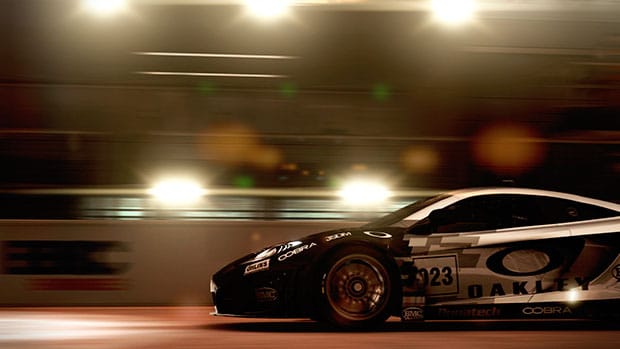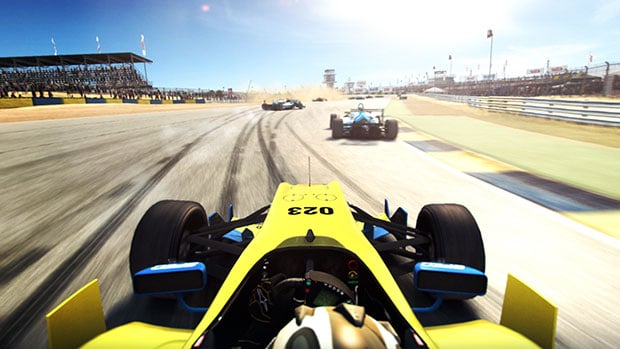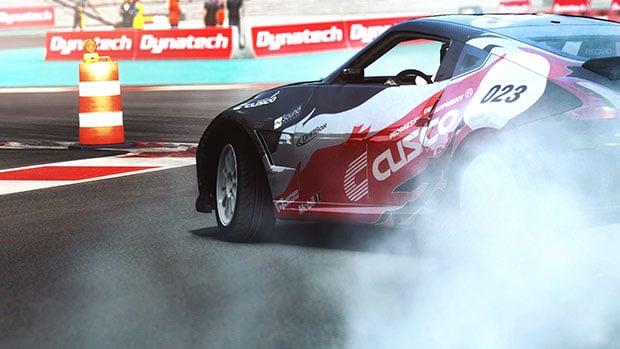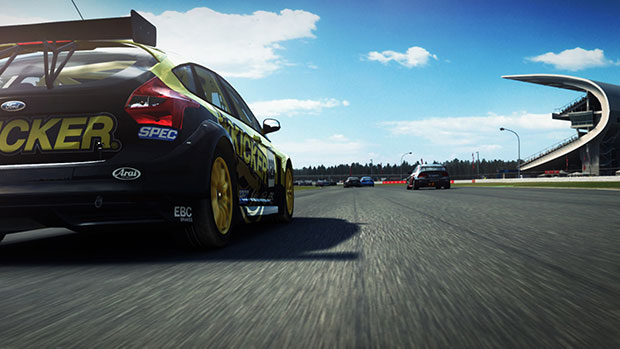Grid: Autosport befuddles me a teensy bit less after spending some quality time with the preview build. I’ve settled on looking at it as a stopgap – a chance to fine-tune gameplay while Codemasters’ technology team works on the engine and support systems that can deliver a true next-gen experience. It’s a greatest hits compendium to show fans that they’ve still got game. Public response to this release should be interesting, especially considering that it’s only out on last gen systems and PC. There’s hope yet though, especially now with Titanfall’s top-selling SKU confirmed to be the Xbox 360 version.

Grid: Autosport sets out to fix Grid 2’s issues and come good on its pure racing legacy, and first impressions, as with all Codies racing games, are good.
Grid 2 was that difficult second album Codemasters couldn’t quite perfect. The game was fun enough, but there was a sense that the first game deserved a better, bolder, and more refined sequel. A lot of the harsh Americana that had found its way into the Dirt series had permeated the presentation, the cockpit cam had been removed based on questionable reasoning, and the driving model had been polished to a characterless sheen. Grid: Autosport sets out to fix these issues and come good on its pure racing legacy.
First impressions, as with all Codies racing games, are good. There’s a deftly-cut intro, paired with some excellent music that segues neatly into the main menus. The menus themselves come with a simple, clean aesthetic, which, while not as visually complex as those from Dirt 3 or Grid 2, flow brilliantly and get you where you need to be without wasting your time with long drawn out animations. With a disembodied voice guiding you through the driver set-up process, you’re soon dropped into a standard seasonal structure that gives you a degree of choice in picking racing disciplines that may interest you.

It’s still decidedly more arcade than simulation, but that balance is what the first game got right – pitch perfect arcade racing.
You’ll also be picking your racing team, and you now have a second team member on track, with whom you can coordinate strategy. We’ll have to see how this feature pans out in the final game as interactions in the preview build were mostly limited to their level of on-track aggression. So far, the career mode doesn’t seem to steer far away from the usual racing career template. Perhaps the mode is a lot more fleshed out in the final release.
Fixes, then. The cockpit cam is back, with a second viewpoint that’s vaguely reminiscent of Slightly Mad’s work on the NFS Shift games. Unfortunately, there’s a lot of missing in-cabin detail that may irk hardcore fans. Still, the immersion does kick into high gear if you’re one of those people with a racing wheel, your periphery blurring as you shred tarmac. The handling has been tightened up as well, with none of the tail swinging looseness of Grid 2 in evidence. You can actually feel the grip this time, and as a result, feel more in control of your actions on track and the outcome of the race. It’s still decidedly more arcade than simulation, but that balance is what the first game got right – pitch perfect arcade racing. The new handling model is particularly evident when driving one of the touring cars.

Touring cars are back as a standalone mode and actually kinda-sorta feel like the TOCA games of old.
Old school fans, you want to steady yourselves – touring cars are back as a standalone mode and actually kinda-sorta feel like the TOCA games of old. They’re the premiere racing discipline in the game, along with endurance, tuner, open-wheel, and street. It’s probably just as well that the on-track car count has been increased to 16 then, making for exactly the sort of paint-swapping that TOCA fans have been clamouring for. The other disciplines are self-explanatory, although drift and endurance races deserve special call-outs. Endurance races aren’t anywhere near as fleshed out or strenuous as in Gran Turismo, for instance (no pit stops?), but drifting does feel much better than it did the last time out.
The game promises 22 locations with multiple ribbons each. We were only privy to the handful that have been revealed thus far, but it’s a decent mix of the tried-and-tested and the exotic. Bathurst, Hockenheim and Brands Hatch are in, as are San Francisco, Paris and Washington as city circuits. You can never have too much Bathurst.

While the handling may be much improved and the modes more diverse, the visual experience does feel a tad lacking.
However, while the handling may be much improved and the modes more diverse, the visual experience does feel a tad lacking. There are way too many fudgy textures even with the settings turned up on a decently specced PC (although this was also the case in the Grid 2 preview build, and was later fixed for retail), and the damage modelling isn’t where it should be. It’s also disappointing that the ace camera angles and deft edits that were in the first game’s replay mode haven’t returned. Codemasters has promised a downloadable 4K texture pack in time for retail release, but there may be more to the problem than can be fixed with a texture pack. With nearly every Codies racing game last gen being powered by the EGO engine, it may be time to freshen things up with a complete overhaul.
We’ll reserve final judgement for when the get our hands on retail code, and a lot of the periphery issues may be hammered out by then. The final car and track lists should also make for an interesting read. Let’s hope they’ve put enough extra work in in the meantime to make up for the engine and career mode limitations.
Grid Autosport releases on 27th June for PC, PS3 and Xbox 360. Check back soon for our review.



